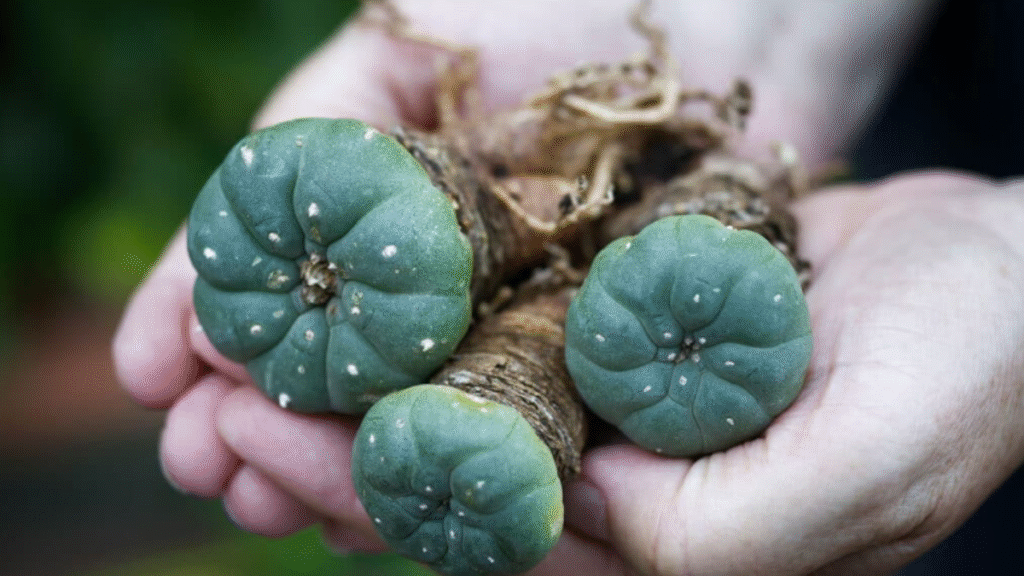Psychedelics have been at the center of human curiosity for centuries, offering both spiritual insight and scientific mystery. Among the many psychedelic substances, Mescaline holds a unique position. Derived naturally from cacti such as peyote, San Pedro, and the Peruvian torch, mescaline is one of the oldest known hallucinogens. This article explores its origins, effects, uses, and the growing interest in its therapeutic potential, particularly among organizations like the Psychedelic Medical Association.
What is Mescaline?
Mescaline is a naturally occurring psychedelic alkaloid. Chemically known as 3,4,5-trimethoxyphenethylamine, it is primarily found in the peyote cactus (Lophophora williamsii), as well as in other cactus species like Echinopsis pachanoi (San Pedro) and Echinopsis peruviana (Peruvian torch).
Mescaline has a long history of use in Native American spiritual practices, where it has been used for over 5,000 years. Traditionally, it plays a central role in religious ceremonies to promote healing, divination, and communion with the divine.
How Does Mescaline Work?
Mescaline primarily affects the brain’s serotonin receptors, particularly the 5-HT2A receptor, which plays a major role in mood, perception, and cognition. When mescaline binds to these receptors, it causes changes in perception, emotional response, and consciousness.
Unlike synthetic psychedelics such as LSD or MDMA, mescaline is entirely plant-derived. This natural origin appeals to many people seeking a more holistic or traditional experience.
Mescaline’s Effects: What to Expect
The mescaline experience, often referred to as a “trip,” can last between 8 to 12 hours, depending on dosage, individual physiology, and the method of ingestion. Some common effects include:
Psychological Effects:
- Visual hallucinations (bright colors, patterns, objects changing shape)
- Altered sense of time and space
- Enhanced emotional sensitivity
- Deep introspection or spiritual insight
- Feelings of unity with nature or the universe
Physical Effects:
- Pupil dilation
- Increased heart rate and blood pressure
- Nausea or vomiting (especially common with peyote ingestion)
- Body temperature fluctuations
While the trip can be beautiful and profound, it can also be intense or overwhelming. Set and setting—the mindset of the user and the environment in which the substance is taken—play crucial roles in shaping the experience.
Mescaline in Traditional Cultures
Indigenous tribes in North and South America have used mescaline-containing cacti in rituals for millennia. In the United States, the Native American Church uses peyote in religious ceremonies, and this practice is protected under federal law.
The ceremonial use of mescaline is not recreational. It is considered a sacred rite, used for spiritual cleansing, healing, and personal insight. Traditional shamans or spiritual leaders guide participants through the experience, ensuring safety and respect for the process.
Legal Status of Mescaline
Mescaline is considered a Schedule I substance under the United States Controlled Substances Act, which means it is illegal to manufacture, possess, or distribute it—except in specific religious contexts such as those practiced by the Native American Church.
Globally, the legality varies. In some countries, mescaline and mescaline-containing cacti are banned, while others allow possession of the plant but not the extracted compound.
This legal gray area is changing as public and scientific interest in psychedelics grows. Decriminalization efforts are underway in various U.S. cities, and some nations are exploring new regulatory frameworks for psychedelics.
The Resurgence of Psychedelic Medicine
In recent years, there has been a resurgence of interest in psychedelic medicine, with growing scientific support for their potential to treat mental health disorders. While substances like psilocybin (from magic mushrooms) and MDMA have taken center stage in research, mescaline is beginning to receive renewed attention.
Mescaline is being studied for its potential to help with:
- Depression
- Anxiety
- PTSD
- Substance use disorders
- End-of-life psychological distress
Although modern clinical studies on mescaline are still limited compared to other psychedelics, anecdotal reports and indigenous knowledge suggest it could offer therapeutic value.
Role of the Psychedelic Medical Association
The Psychedelic Medical Association is one of the key organizations advocating for the responsible use and study of psychedelic substances, including mescaline. This association brings together researchers, medical professionals, and educators to promote evidence-based approaches to psychedelic therapy.
Their work involves:
- Conducting and supporting clinical research
- Educating the public and healthcare providers
- Developing ethical standards for psychedelic-assisted therapy
- Advocating for legal and policy reform
By providing scientific rigor and professional oversight, the Psychedelic Medical Association is helping to legitimize mescaline and other psychedelics in the medical community.
Microdosing Mescaline: A New Trend?
Microdosing—the practice of taking very small, sub-perceptual doses of psychedelics—has become increasingly popular, particularly with substances like LSD and psilocybin. Some individuals are now experimenting with microdosing mescaline, claiming benefits such as:
- Improved mood
- Enhanced creativity
- Greater emotional balance
- Increased focus and productivity
However, unlike LSD or psilocybin, mescaline is less studied in microdosing contexts, and its longer duration may make it less convenient. More research is needed to verify the safety and efficacy of this practice.
Risks and Considerations
While mescaline is generally considered non-addictive and physically safe, it is not without risks. Possible concerns include:
- Psychological distress: Bad trips can lead to anxiety, paranoia, or panic attacks.
- Medical contraindications: It may be risky for people with heart conditions or psychiatric disorders like schizophrenia.
- Legal consequences: Possession can lead to arrest in many countries.
Responsible use—preferably in a guided or therapeutic setting—is crucial. Anyone considering mescaline should educate themselves thoroughly and consult medical or mental health professionals when needed.
Conclusion: A Sacred Tool with Modern Promise
Mescaline stands at the crossroads of ancient tradition and modern science. As the stigma around psychedelics continues to fade, this natural compound is being re-examined not only as a spiritual sacrament but as a potential medicine.
Organizations like the Psychedelic Medical Association are helping bridge the gap between historical wisdom and modern clinical research. With their guidance, mescaline and other entheogens may one day become valuable tools in the treatment of mental health conditions, personal growth, and even spiritual development.
Though challenges remain—legal, scientific, and ethical—the future of mescaline looks promising. As more people seek alternatives to conventional medicine, nature’s ancient gifts are finally getting the respect and attention they deserve.







